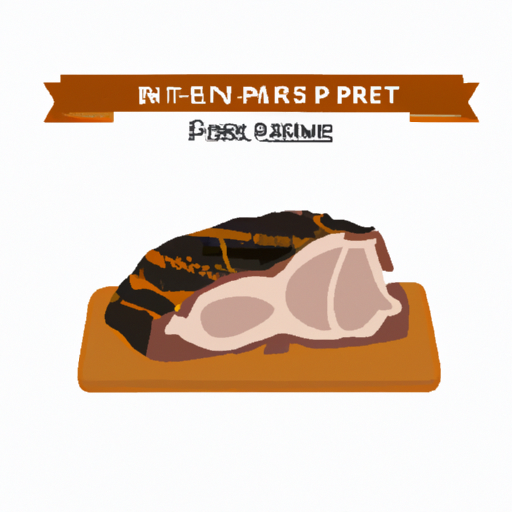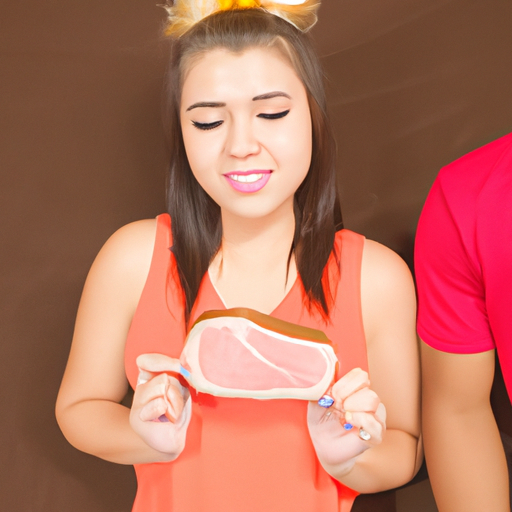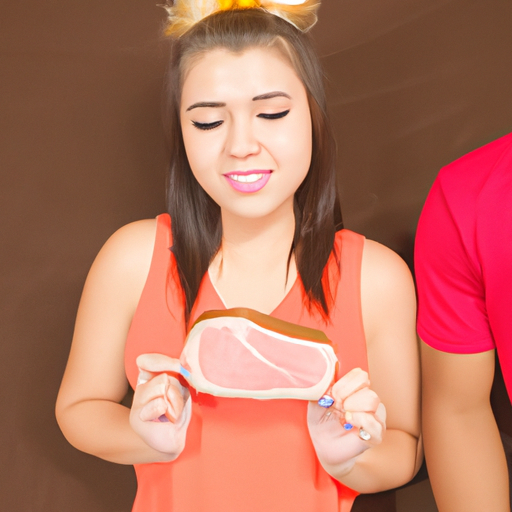Get ready to elevate your kitchen skills to the next level with “Cooking Prime Rib: A Comprehensive Guide.” This ultimate resource is your key to mastering the art of cooking prime rib to perfection. Packed with valuable tips, step-by-step instructions, and a handy cooking chart specifically for boneless prime rib, this guide will empower you to create mouthwatering, tender, and juicy prime rib dishes that will impress even the most discerning of palates. Whether you’re a seasoned home cook or a novice in the kitchen, “Cooking Prime Rib” is your go-to companion for achieving prime rib excellence every time.

Choosing and Purchasing Prime Rib
Selecting the Right Cut of Prime Rib
When it comes to choosing the perfect prime rib, there are a few factors to consider. First and foremost, you’ll want to decide between bone-in or boneless prime rib. Bone-in prime rib tends to be more flavorful and juicy, while boneless prime rib is easier to carve and serve. Additionally, consider the grade of the meat. Prime grade is the highest quality, followed by choice and select. Prime rib is typically sold in different sizes, so make sure to select a cut that will accommodate your needs and the number of servings you’re planning.
Determining the Quantity Needed
To determine the quantity of prime rib needed for your gathering, a general rule of thumb is to estimate around ½ to ¾ pound per person. However, this can vary depending on individual appetites and whether you plan to serve additional side dishes. If you’re unsure about the exact quantity, it’s always better to err on the side of caution and have a little extra than not enough.
Purchasing Tips and Considerations
When purchasing prime rib, it’s best to visit a reputable butcher or meat market. They can help guide you through the selection process and may even offer recommendations based on your preferences. Look for prime rib with a good amount of marbling, as this will ensure a juicy and tender result. Also, consider the timing of your purchase – buying your prime rib a few days in advance allows for dry aging, which enhances the flavor and tenderness of the meat.
Preparing Prime Rib for Cooking
Trimming Excess Fat
Before cooking your prime rib, it’s important to trim excess fat, as this will help prevent flare-ups and ensure even cooking. Use a sharp knife to carefully remove any large pieces of fat from the surface of the meat. However, it’s important to leave a thin layer of fat intact, as this will enhance the flavor and moisture during cooking.
Dry Aging vs Wet Aging
Dry aging is a process that involves storing the prime rib in a controlled environment with controlled humidity for several weeks. This allows the enzymes within the meat to break down, resulting in a more intense flavor and tender texture. Wet aging, on the other hand, involves vacuum-sealed packaging to enhance tenderness and retain moisture. Both methods have their merits, so consider your personal preference and availability when deciding which method to use.
Seasoning the Meat
Seasoning is an essential step in preparing prime rib for cooking. A classic and simple approach is to use salt, pepper, and garlic as a rub. However, you can also get creative and experiment with additional herbs and spices to enhance the flavors. Be generous with your seasoning, as prime rib can handle bold flavors.
Brining Options
Brining is an optional step, but it can add another layer of flavor and juiciness to your prime rib. To brine, submerge the prime rib in a mixture of water, salt, sugar, and any desired aromatics. This can be done for several hours or even overnight. Just remember to adjust the seasoning of your prime rib accordingly, as the brine will already add some saltiness.
Methods of Cooking Prime Rib
Roasting in the Oven
Roasting prime rib in the oven is a classic and reliable method. Preheat your oven to the desired temperature and place the prime rib on a rack in a roasting pan. Cook uncovered for the initial searing, then cover with foil to allow the meat to cook evenly. Baste the prime rib occasionally with its own drippings for added flavor. Use a meat thermometer to ensure the desired internal temperature is reached.
Grilling on a Gas or Charcoal Grill
Grilling prime rib can infuse a delightful smoky flavor to the meat. Preheat your grill and create two zones of direct and indirect heat. Sear the prime rib over high heat, then move it to the indirect heat zone to continue cooking. Keep a close eye on the temperature and adjust the grill vents accordingly. Remember to let the meat rest before carving to retain its juices.
Sous Vide Cooking
Sous vide cooking involves sealing the prime rib in airtight bags and cooking it in a water bath at a precise and controlled temperature. This method ensures consistent doneness throughout the meat. Season the prime rib, vacuum-seal it, and immerse it in a water bath set to the desired temperature. After sous vide cooking, finish the prime rib by searing it on high heat to develop a beautiful crust.
Smoking Techniques
Smoking prime rib can result in a tantalizing combination of smokiness and tenderness. Prepare your smoker, ensuring a consistent temperature. Season the prime rib with your desired rub or marinade and carefully place it in the smoker. Maintain a steady smoke and temperature until the internal temperature reaches your desired doneness. Smoking time can vary based on the size of the prime rib, so use a meat thermometer to monitor progress.

Cooking Temperatures and Time
Internal Temperatures for Desired Doneness
Cooking prime rib to the correct internal temperature is crucial to achieve your preferred level of doneness. Here are some general guidelines:
- Rare: 120-125°F (49-52°C)
- Medium Rare: 130-135°F (54-57°C)
- Medium: 140-145°F (60-63°C)
- Medium Well: 150-155°F (66-68°C)
- Well Done: 160°F (71°C) and above
Remember, these temperatures are a guide, and individual preferences may vary. It’s best to use a meat thermometer to ensure accuracy.
Calculating Cooking Time
To calculate the cooking time for your prime rib, use the general rule of thumb of 15-20 minutes per pound of meat. However, it’s always recommended to rely on a meat thermometer for precise cooking times. Keep in mind that cooking times can also vary depending on the cooking method and individual oven or grill settings.
Using a Meat Thermometer
Using a meat thermometer is the most accurate way to gauge the doneness of your prime rib. Insert the thermometer into the thickest part of the meat, away from the bone, for an accurate reading. Aim for the desired internal temperature based on your preferred level of doneness.
Oven Roasting Prime Rib
Preheating the Oven
Before you begin roasting your prime rib, preheat your oven to the desired temperature. This ensures that the oven is at the optimal temperature right from the start. Generally, a temperature of 325°F (163°C) is recommended for oven roasting prime rib.
Choosing the Right Pan
Selecting the right pan for roasting is important to promote even cooking and prevent excessive browning. A sturdy roasting pan with a rack is ideal, as it allows air circulation around the prime rib and ensures it doesn’t sit in its own juices. If you don’t have a roasting pan, a sturdy baking sheet with a wire rack can also work well.
Seasoning and Preparing the Roast
Once your prime rib is trimmed and seasoned, place it on the rack in the roasting pan. If desired, you can add some aromatics, such as onions and herbs, to the pan for additional flavor. Make sure the fat side is facing up, as this will help keep the meat moist during cooking.
Cooking Techniques
To achieve a perfectly cooked prime rib, start by searing the meat at a high temperature for around 15 minutes. This initial sear helps to develop a flavorful crust. After searing, reduce the oven temperature to the desired level and continue roasting until the desired internal temperature is reached. Basting the prime rib occasionally with its own juices during cooking can further enhance the flavors.
Grilling Prime Rib
Preparing the Grill
Before grilling your prime rib, make sure your grill is clean and well-maintained. Brush the grates with a wire brush to remove any debris or leftover residue. This helps to ensure even cooking and prevents sticking.
Indirect Grilling Method
For grilling prime rib, you’ll want to use the indirect grilling method. Start by preheating your grill to medium-high heat. Once hot, turn off one side of the burners or move the charcoal to one side. This creates a zone of indirect heat where you’ll place the prime rib for cooking. The indirect heat allows for gentle and even cooking without direct heat underneath.
Marinades and Rubs for Grilling
Marinades and rubs can add an extra layer of flavor to your grilled prime rib. Consider using a mixture of herbs, spices, and oil to create a delicious marinade. Allow the prime rib to marinate for at least a couple of hours before grilling to let the flavors penetrate the meat. Alternatively, you can apply a dry rub to the surface of the prime rib just before grilling.
Grill Temperature Control
Maintaining a consistent grill temperature is essential for achieving the desired doneness. Pay attention to the grill vents and adjust them accordingly to control the heat. A meat thermometer can also help you monitor the internal temperature of the prime rib.
Sous Vide Cooking Prime Rib
Preparing the Sous Vide Setup
Before cooking prime rib sous vide, you’ll need to set up your sous vide equipment. Fill a large container or a sous vide machine with water, making sure it reaches the desired level to fully submerge the prime rib. Set the sous vide machine to the precise temperature required for your desired level of doneness.
Seasoning the Meat
Season the prime rib with your chosen blend of herbs, spices, and salt. You can create a dry rub or use a liquid marinade. Make sure to evenly coat the meat with the seasoning, ensuring every surface is covered.
Sous Vide Cooking Times and Temperatures
Consult a sous vide temperature guide for the recommended cooking times and temperatures based on your desired level of doneness. Place the seasoned prime rib in a vacuum-sealed bag and submerge it in the water bath. Allow it to cook for the specified time until the internal temperature is reached.
Finishing Techniques
After sous vide cooking, the prime rib may lack the crust or sear that is characteristic of other cooking methods. To remedy this, you can finish the prime rib by searing it on high heat for a short period, either on a grill, stovetop, or under a broiler. This will give the meat a beautiful caramelized exterior, while the sous vide method ensures it remains perfectly cooked and tender.
Smoking Prime Rib
Choosing the Right Wood for Smoking
When smoking prime rib, selecting the right type of wood can greatly influence the flavor profile. Woods like hickory, oak, mesquite, or fruitwoods such as apple or cherry can complement the rich taste of the prime rib. Consider the combination of flavors you desire and experiment with different wood varieties to find the perfect match.
Preparing the Smoker
Before smoking your prime rib, prepare your smoker according to the manufacturer’s instructions. Ensure that you have a steady temperature and a consistent flow of smoke. Preheating the smoker to the desired temperature before placing the prime rib inside is essential for even cooking.
Seasoning and Marinating the Meat
Season the prime rib with a combination of salt, pepper, and your choice of herbs and spices. Apply the seasoning generously to enhance the flavor. For added depth, you can also marinate the prime rib overnight in a mixture of your preferred ingredients. This will infuse the meat with extra flavor throughout the smoking process.
Smoking Time and Temperature Guide
To smoke prime rib, maintain a steady temperature between 225-250°F (107-121°C). The cooking time will depend on the size and thickness of the prime rib. Consult a smoking time and temperature guide for specific recommendations. Use a meat thermometer to ensure the internal temperature reaches your desired level of doneness.
Resting and Carving Prime Rib
Allowing the Meat to Rest
After cooking, it’s important to let the prime rib rest before carving. This allows the juices to redistribute and ensures a juicy and tender result. Tent the cooked prime rib loosely with aluminum foil and let it rest for about 15-20 minutes. This resting period will give you time to finish any last-minute preparations.
Carving Techniques
When it comes to carving prime rib, it’s best to use a sharp carving knife. Start by slicing against the grain, which helps to maintain tenderness. Cut thick slices for those who prefer their prime rib cooked more thoroughly, and thinner slices for those who prefer it rare or medium-rare. Remember to remove any bones before slicing, if you opted for bone-in prime rib.
Serving Suggestions and Accompaniments
Prime rib is a show-stopping centerpiece for any meal, and there are endless possibilities when it comes to serving and accompaniments. Classic options include serving the prime rib with horseradish sauce, au jus, or a flavorful gravy. Pair it with roasted vegetables, creamy mashed potatoes, or a fresh salad for a delicious and well-rounded meal.
Troubleshooting and Tips
Preventing Overcooking or Undercooking
To prevent overcooking or undercooking your prime rib, rely on an accurate meat thermometer. Follow the recommended internal temperature guidelines and monitor the temperature throughout the cooking process. Keep in mind that the prime rib will continue to cook as it rests, so it’s best to remove it from the heat a few degrees below the desired doneness.
Dealing with Flare-Ups on the Grill
If you experience flare-ups while grilling your prime rib, it’s important to handle them properly to prevent burning or charring. The key is to avoid excessive fat dripping onto the flames. Move the prime rib to a cooler part of the grill, or temporarily turn off the burners beneath the flare-up. Use caution and always have a spray bottle of water nearby to tame any unexpected flames.
Reheating Leftover Prime Rib
Leftover prime rib can be just as delicious as when it’s first cooked, but reheating it correctly is crucial. To preserve moisture, place the slices or portioned prime rib in an oven-safe dish with a bit of beef broth or au jus. Cover the dish tightly with foil and reheat in a preheated oven at a low temperature until warmed through. Be careful not to overcook, as this can result in dry meat.
Storage and Freezing Recommendations
To store leftover prime rib, allow it to cool completely before refrigerating. It’s best to slice the remaining meat and store it in airtight containers or wrap it tightly in plastic wrap or foil. Properly stored, leftover prime rib can be refrigerated for up to 3-4 days. If you have a large quantity or are not planning to consume it within that timeframe, consider freezing the leftovers. Wrap individual slices or portions tightly in plastic wrap and place them in a freezer-safe bag or container. Frozen prime rib can be enjoyed within 2-3 months.
